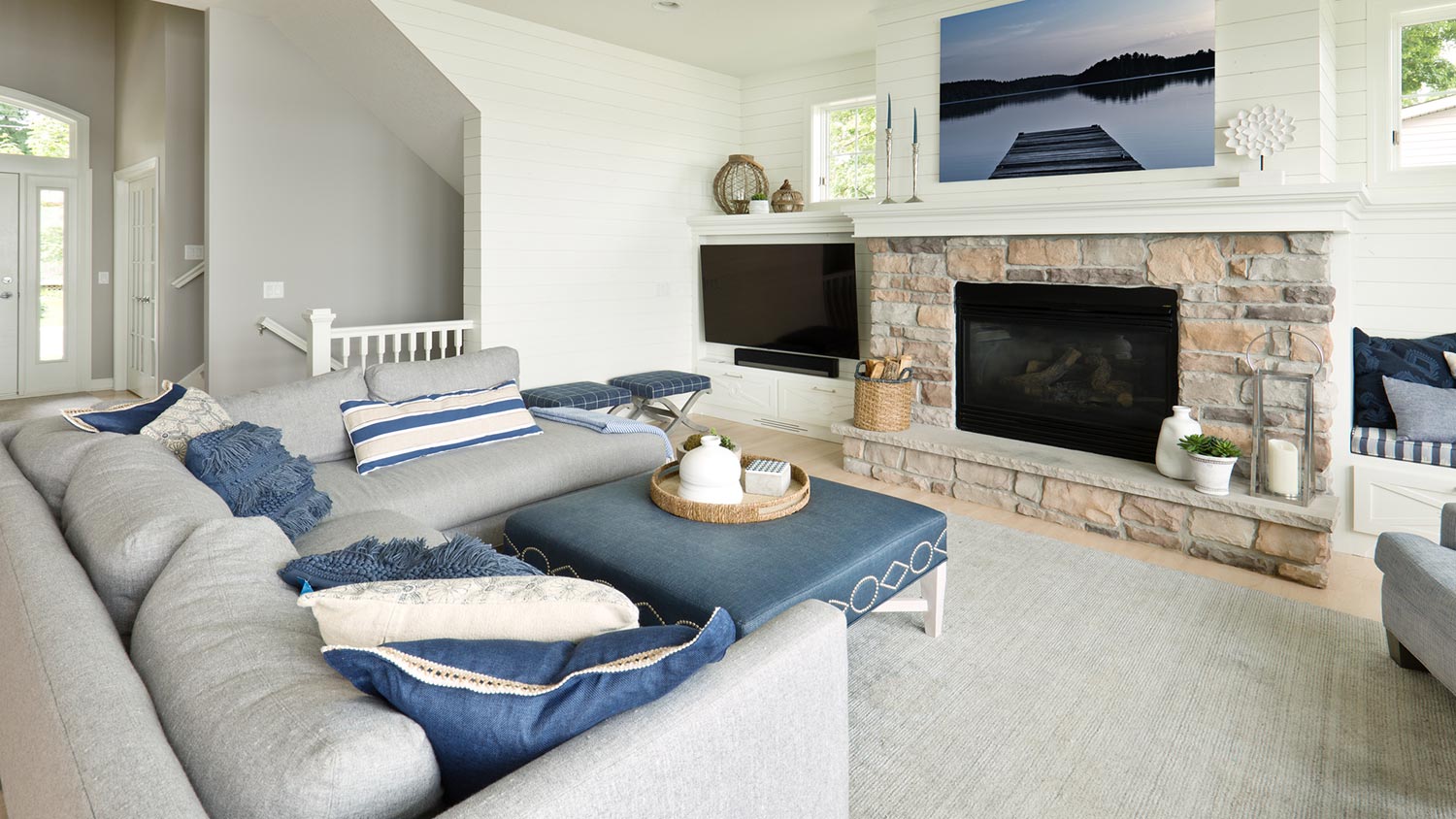
Need a little extra room for clothes storage in your home? Learn about the average cost to build a closet, some cost factors to consider, and more.
Consider your seating area, the size of the screen, and the size of your wall when deciding where to mount your flat-screen TV


Flat-screen TVs have exploded in popularity over the years, and TV and movie buffs have taken full advantage of the home theater experience. Unlike the large, unwieldy televisions of the past that took up a significant amount of space in a room—not to mention the bulky entertainment centers required to house them—flat-screen TVs can mount to a wall for a sleek silhouette.
Installing a flat-screen TV on a wall can be a relatively easy DIY project, particularly if you have a second set of hands to help you manage the large screen. But before you pick up those power tools, follow these steps first:
While many will argue that you can never have a TV screen that’s too big, there is such a thing as having one too big for your wall. According to Sony, there should be at least 4 inches of space on either side of the TV to allow for proper ventilation. (The back of the TV should have at least 2 to 6 inches of space, which is easily achievable with a standard TV mount.)
This doesn’t mean that you should have your flat screen hanging off the edge of a wall, though. For both aesthetic and ventilation purposes, choose a wall in your home that can contain your flat-screen TV in its entirety.
Common sense dictates that you want to have a seating area close enough to the TV to see it but not too close to cause eye strain. Samsung suggests using this simple equation to figure out the distance between your flat screen and your seating area:
Viewing distance (in inches) / 2 = Recommended TV size
Let’s say you’ve got a couch about 12 feet from the wall. There are 12 inches in a foot, so that makes 144 inches. Divide 144 by 2 and you’ve got 72 inches—the maximum suggested screen size for that distance.
If you cannot achieve the suggested distance from the screen with your seating area, you can always choose a smaller screen. While that might be disappointing news to some, your home theater area will look more proportionate within the space.

Now that you have determined the proper distance, it’s time to figure out how high or low on the wall your TV should be mounted. It’s all about eye level so again, let your seating area dictate. Do you have a couch? Reclining armchairs? Bean bags? Bar stools? Each of these seats offers a different vantage point from the screen.
Ideally, you want the middle of the screen to be at the eye level of the audience. This can get tricky if there are seats of varying heights. Above all, you do not want your movie night to cause neck strain, so choose a height accordingly.
Now that you have a better idea of where to mount your flat-screen TV, you’ll want to test the placement first before getting out those power tools.
Using painter’s tape, mark the outline of the TV on the wall. Then, sit with it for a while—literally. Set up your seating area and settle in for a faux movie night at home. Do you feel comfortable? Make adjustments as necessary. When you are satisfied with the placement, now you can grab that stud finder and start installing your flat-screen TV.
While mounting a flat-screen TV doesn’t take long, it is a project that you want to do right the first time. Follow these four steps to find the proper placement of your TV for an enjoyable home theater experience.
From average costs to expert advice, get all the answers you need to get your job done.

Need a little extra room for clothes storage in your home? Learn about the average cost to build a closet, some cost factors to consider, and more.

Discover the cost to design a bathroom, including key price factors, to help you plan your remodel with confidence and avoid budget surprises.

Discover the average feng shui consultant cost, what impacts pricing, and how to save on your consultation.

Wondering who to hire to install acoustic ceiling tiles? Learn which pro to call, how installation works, and what to expect. Get confident before you book.

Architectural details like wood molding help frame a space and add visual interest. From baseboards and door casing to wainscoting and board-and-batten paneling, read on for a rundown of all the types of trimming for your home.

There are a lot of crown molding materials to choose from, and you’ll need to know the benefits of each to know how to pick the best one for your needs.